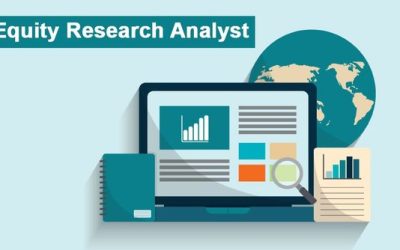Which describes the relationship between enterprise platforms and the cloud ?
Companies need to be able to use the latest innovation in technology to stay competitive. This includes leveraging composable architecture, cloud version control, and more.
The enterprise platform is the perfect solution for organizations seeking to do just that. The platform provides unified governance models and flexibility to drive digital transformation, performance, and growth. Here we will discuss about Which describes the relationship between enterprise platforms and the cloud ?
Platform as a Service (PaaS)
Unlike IaaS and SaaS, platform as a service delivers a framework of cloud components to developers for applications but leaves the management of infrastructure, operating systems, applications and middleware to client organizations. PaaS typically offers tools required for software development, such as text editing, version management and compilation. These developer tools enable engineers to write, deploy and manage workloads on an ongoing basis.
![]()
Like IaaS, PaaS can be accessed through public, private or hybrid clouds to deliver computing and application services. The cost is usually based on a per-use or monthly subscription model.
Some of the benefits that come with a PaaS solution include reduced time to market for new application development, improved developer productivity and the ability to scale and adapt to changing business needs. However, the organization should evaluate the PaaS solution to ensure it can provide reliable uptimes and meet recovery time objectives (RTOs) and recovery point objectives (RPOs).
It is important for businesses considering adopting PaaS to make sure that they are prepared for the migration process. This includes determining whether a full migration to the cloud is necessary or if some applications can be run in parallel to existing on-premise workloads. Additionally, organizations should evaluate how a PaaS deployment will impact other operations, such as data backup and recovery and network performance.
When it comes to evaluating PaaS solutions, business leaders must define clear goals and objectives for the implementation and use of the solution. For example, they might want to accelerate the speed of development or reduce costs, and it may also be important for them to understand how a particular solution will affect user experience and application security.
The CIO/CTO may drive the decision to use PaaS, and staff members involved in the selection and evaluation of a specific product include the software architect and engineering teams. Professional IT administrators might be involved in ensuring that PaaS meets business continuity and regulatory requirements.
Infrastructure as a Service (IaaS)
Infrastructure as a service is one of three main categories of cloud computing services, alongside software as a service and platform as a service. In an IaaS model, a cloud service provider manages IT infrastructure components such as storage, servers and networks. They deliver these via virtual machines that are accessible through the Internet. This can make IT operations faster, easier and more flexible. It can also reduce costs. In the past, companies would have to purchase and maintain their own IT hardware, which could be expensive. These expenses could be further increased by the cost of hiring technical experts to support and troubleshoot the equipment.
![]()
IaaS enables enterprises to free themselves from these costs and concentrate on their core business. This can result in greater agility for their applications and lower operational costs, allowing them to invest the savings back into developing their products or services. It also provides a secure environment that can help organizations to meet compliance and legal obligations related to data protection.
While the benefits of IaS can be significant, it is important to thoroughly assess your organization’s capabilities before implementing this model. IT departments must be able to handle the ongoing maintenance and technical support that comes with IaS. They must be able to keep pace with changes in technology and to respond quickly to unexpected demand. They should also be able to negotiate contracts that clearly define the services and costs they will receive from their IaS providers.
For example, some IaS providers may charge customers based on how much virtual machine space they use. This can lead to a fluctuating bill that may be harder to budget for than a fixed monthly fee. This is why it’s important to compare providers and their products. Thorough research can prevent you from being surprised by hidden fees and charges.
IaC and IaaS can work together to streamline infrastructure deployment. However, it is crucial to have clear visibility of your entire IT infrastructure and comprehensive infrastructure monitoring, regardless of which environment you deploy your applications in. This will ensure that your networked assets are configured consistently across all environments. It will also enable you to identify security vulnerabilities quickly, and make necessary adjustments to your infrastructure to mitigate risks.
Software as a Service (SaaS)
SaaS is a software distribution model in which vendors host application programs on their remote cloud network, accessed by end users through web browsers. These products typically operate as a subscription service, in which the vendor hosts applications and storage for the duration of the contract, without any client involvement in installation or management of application systems.
As the most common type of cloud computing model, SaaS delivers a number of intriguing benefits. It eliminates the need to install and configure benchmark software in the client environment, which reduces the amount of time it takes to get up and running. It also allows for a more streamlined approach to IT infrastructure, as customers can bypass the need for on-premise equipment to support the application.
![]()
It also eliminates the need for IT specialists to manage multiple computing software instances, which reduces operating expenses and increases efficiency. Companies can often set up a basic SaaS system in a matter of hours, and it can scale up to meet enterprise-level business needs as well. SaaS solutions can even provide better user experiences by eliminating the need to customize a program for each individual customer.
While SaaS offers many advantages, it is not without some risks as well. The most obvious risk is a dependency on an external service provider to keep its software secure and available at all times. As many businesses have experienced in recent years, a major service outage at a SaaS provider can have significant implications for thousands of users simultaneously.
Another concern is data privacy. SaaS providers are required to have strong data protection policies, but some buyers still worry about security breaches or the loss of access to a critical application if a vendor goes out of business. As a result, most SaaS contracts include prepaid contingencies and provisions for ensuring that your company will retain ownership of the data located on the vendor’s servers in the event of a disaster. These guarantees make the benefits of SaaS outweigh the risks, however, making it a popular choice for most organizations.
Platform Integration
Integration via the cloud allows multiple software tools to communicate and share data. This improves productivity and saves companies money. It also helps to eliminate costly manual methods that are not efficient and can lead to errors.
It’s important to note that the cloud is not a replacement for existing systems, but rather a way to combine them with new and innovative solutions. It’s not uncommon for many businesses to use several different software tools and platforms, and having the ability to integrate all of them together into one cohesive system is a huge benefit.
This is where integration platform as a service (iPaaS) comes in. It’s a unity of software that connects various apps, even if they work in different environments. This can be built from the ground up or bought as a pre-built output available for installation. Some examples of iPaaS include Salesforce, Boomi, and Unifi. It’s a great alternative to older integration technology like enterprise service buses (ESB) because it is more flexible and can be used in any environment.
When it comes to integrating different systems, it’s essential to have the right cloud integration tools in place. Many businesses struggle with this because they have a lot of different software and hardware that needs to be connected. Many traditional integration tools are not capable of connecting these systems, and they can result in a lack of collaboration, visibility, functionality and access to information.
To avoid these issues, it’s important to find a solution that can be used in any environment and that is customizable. This will allow you to modify the amount of storage that is being used based on your company’s unique needs. It will also enable you to pay for only what you need, which saves you money.
When it comes to cloud integration, you want to make sure that you have a strong data governance policy in place. This will ensure that you don’t combine the wrong data or create a security risk. It’s also important to have the right processes in place to protect your data, and you should always have a backup plan for your data in case of an emergency. To know more about Which describes the relationship between enterprise platforms and the cloud ? just follow us.











